- 한국어
- English
- 日本語
- 中文
- العربية
- Español
- Français
- Deutsch
- Pусский
- Tiếng Việt
- Indonesian
| Monthly KOREA’s Jan. 2020 issue. ▶ Link to Webzine Hanok: Story / Interview(i) / Interview(ii) / Spotlight |
Hanok Stay Recommendations
Happiness is traveling with friends, loved ones and family no matter the destination. Thus nothing tops travel within Korea than staying overnight in a quaint Hanok. The charm of traditional Korean houses awaits both downtown and in nature with the rise of “Hanok stay.”
Written by Kim Samuel

© Gurume
Gurume
Andong, the capital of Gyeongsangbuk-do Province, is famous as the home of Confucian culture during the Joseon Dynasty (1392-1910). Aside from the plethora of famous tourist attractions such as Hahoe Village and Dosanseowon Confucian Academy and the numerous cultural properties, the city also offers many places to stay.
Gurume consists of 11 guestrooms at seven traditional Korean houses built from the 1600s to the 1800s. Baksanjeong, the oldest among the houses, is a pavilion built in early 1600 and named after the pen name of Yi Ji (1560-1631), a high-ranking official for industry under the reign of King Sejong the Great.
|
190 Minsokchon-gil, Andong-si, Gyeongsangbuk-do Province |
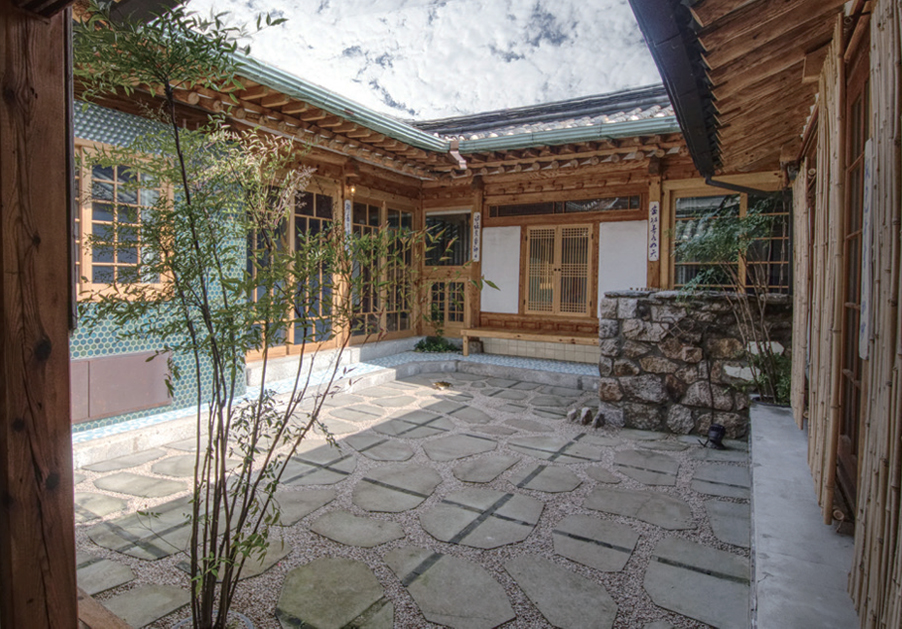
© Hanoksallim
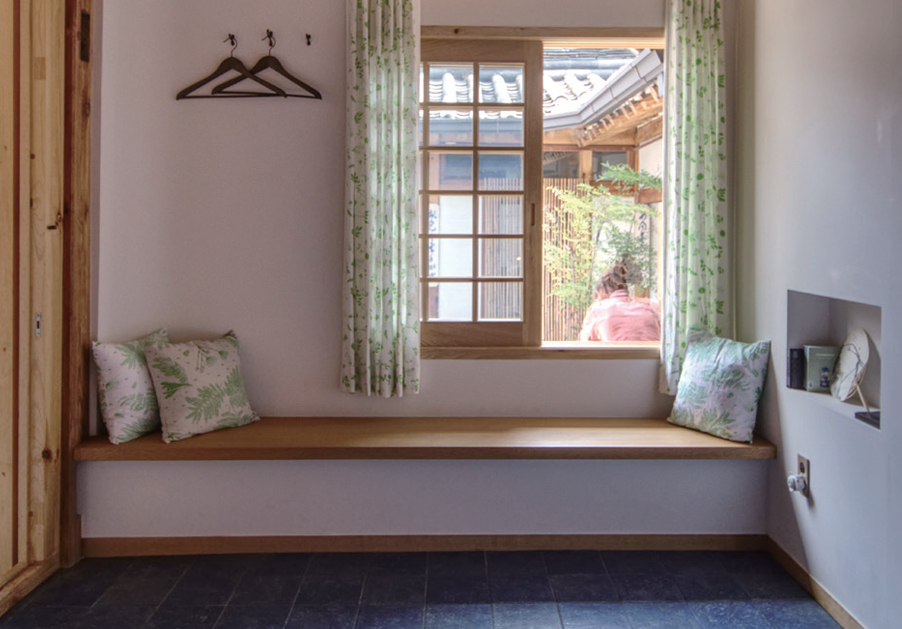
© Hanoksallim
Hyehwa1938
Hanok structures were built en masse across Korea during the Japanese colonial period but their number has since fallen considerably. Hyehwa1938, however, has survived for 80 years and in 2017, the old Hanok reopened its doors with space for offices and accommodations thanks to the work of architects.
Turning 80, Hyehwa1938 has undergone refurnishing with the addition of materials used in modern architecture to raise its functionality. Its original frame remains intact and its value has shot up thanks to the fusion of architecture and facilities from yesterday and today.
This Hanok had the floor of its living room lowered 25 cm, and a rock excavated in this process was recycled into a stone wall for a small guestroom. Compared to ordinary Korean-style accommodations, this place is unique in that its yard has concrete steppingstones and its floor is finished with tiles. Located only 1.7 km from Changgyeonggung Palace and located close to Seoul City Hall or Gwangjang Market, Hyehwa1938 is perfect for those interested in downtown Seoul.
|
7, 16-gil, Seonggyungwan-ro, Jongno-gu, Seoul |
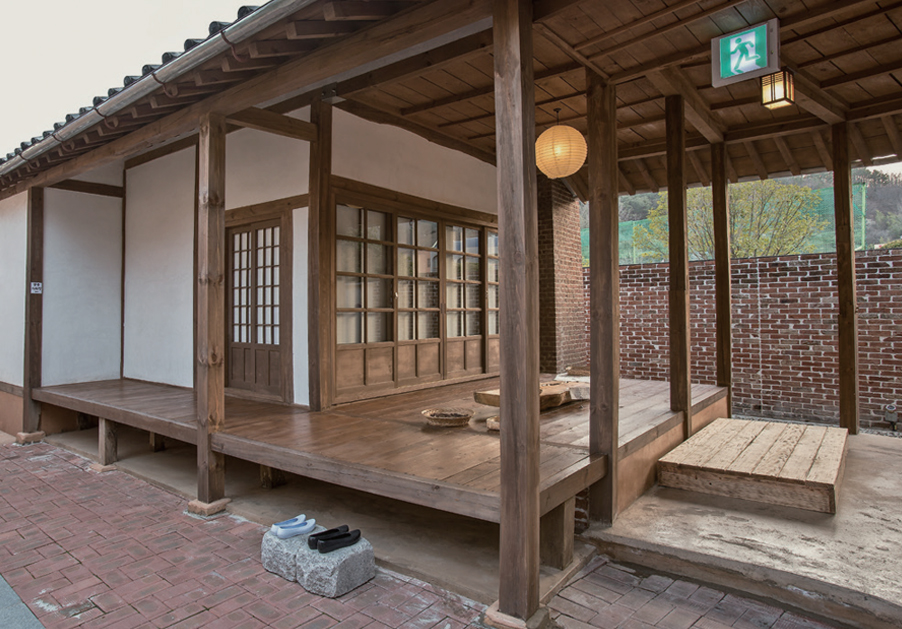
© National Trust Korea
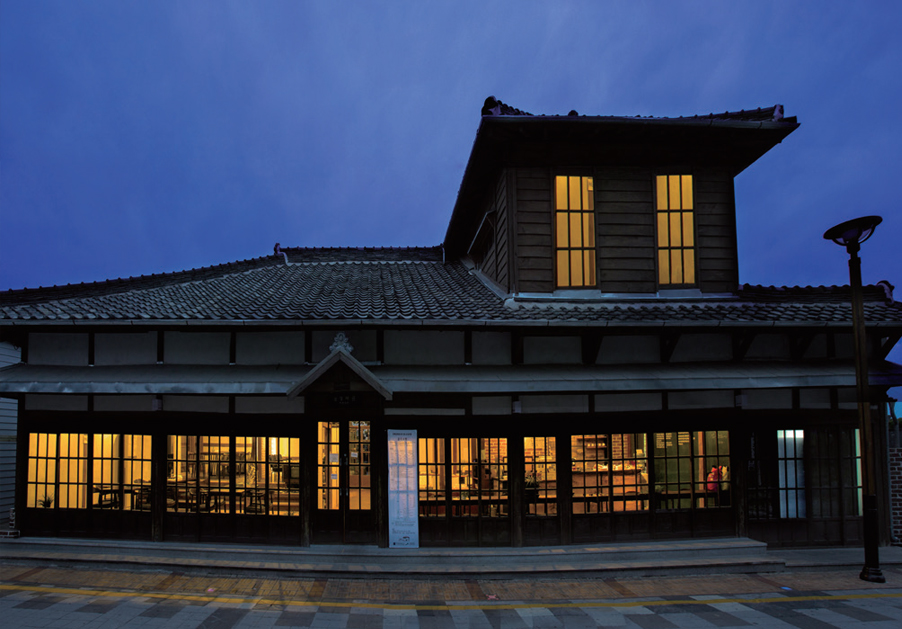
© National Trust Korea
Boseong Inn
Namdo Inn, part of the setting of the epic Korean novel The Taebaek Mountains, was inspired by Boseong Inn.
In Beolgyo, an area that was a transportation center from the end of the Joseon Dynasty to the Japanese colonial period, the floating population surged because of the influx of Japanese, and the inn’s size made Boseong akin to a five-star hotel and a landmark of the region. In 2004, the facility was designated Registered Cultural Property No. 132 for its historical and architectural value.
Comprising seven buildings, the inn was reopened in 2012 after a two-year restoration based on a decision to keep Boseong’s past image intact rather than install modern facilities. The tatami room on the second floor, formerly a tearoom, is used as a multipurpose space. The inn also has a cafe and a small theater.
|
19 Taebaeksanmaek-gil, Beolgyo-eup, Boseong-gun County, Jeollanam-do Province |
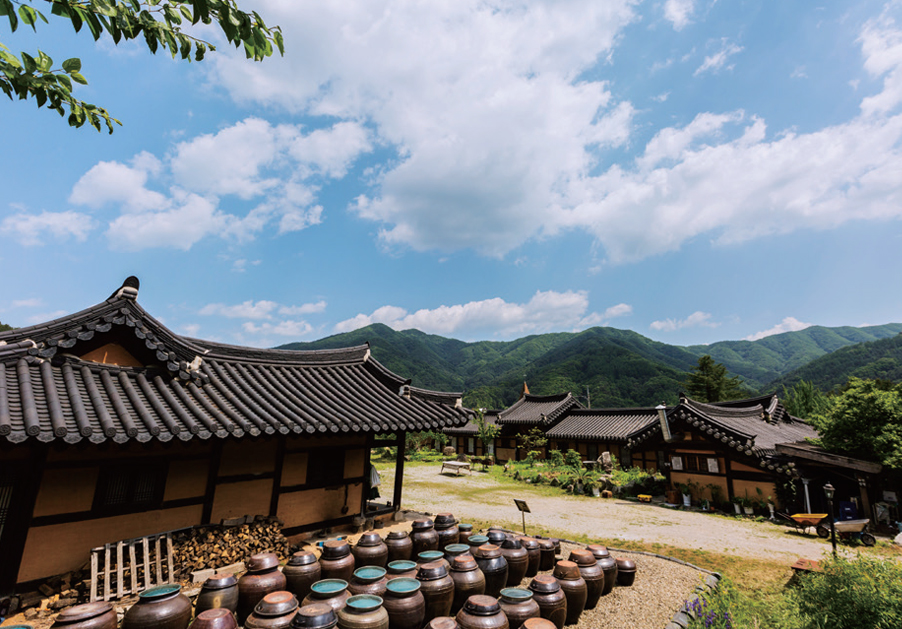
© Chi-ong Art Center
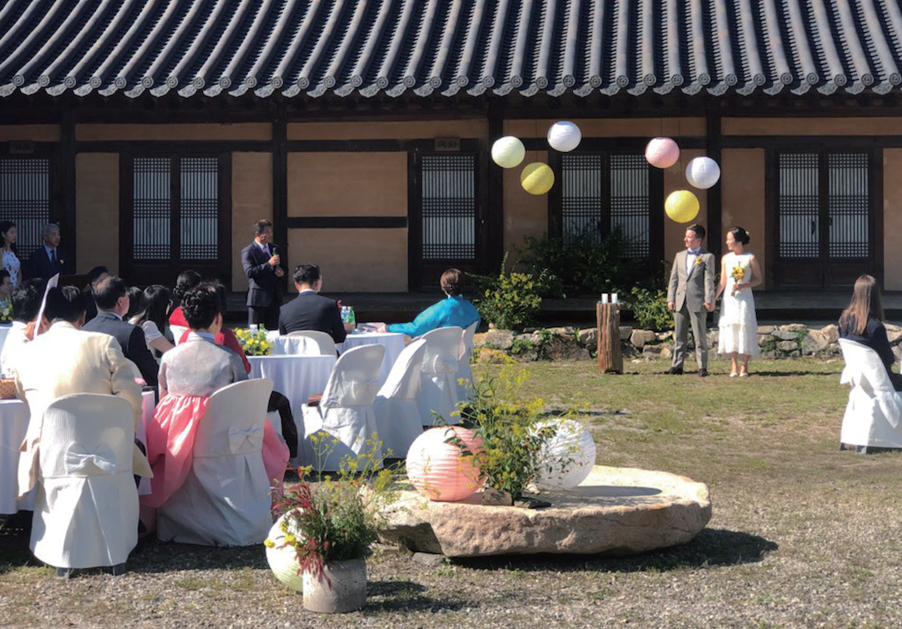
© Chi-ong Art Center
Chi-Ong Art Center
Located on the outskirts of Seoul, Gapyeong-gun County, Gyeonggi-do Province is crowded with travelers throughout the year. Sitting at the foot of Chungnyeongsan Mountain, Chi-Ong Art Center is a complex cultural space offering an excellent opportunity to experience a Hanok stay certified by the Korea Tourism Organization.
The three-story center’s unique architectural composition is characterized by the carving of space into a low hill like a stairway. A Korean restaurant on the first floor features the flavors of nature and the second floor has a seminar room with a capacity of 60 people, an art gallery and an elegant Korean-style garden. The third floor is comprised of a spacious yard extending past the tall gate, guestrooms with narrow wooden porches and those with ondol (heated floor), and a teahouse serving traditional Korean tea. The house is 17 years old but its atmosphere is the same as homes more than a century old. This is probably due to the unpolished roof tiles and the wall made up of unglued stones from the county in keeping with traditional building practices.
|
300 Sumokwon-ro, Sang-myeon, Gapyeong-gun County, Gyeonggi-do Province |